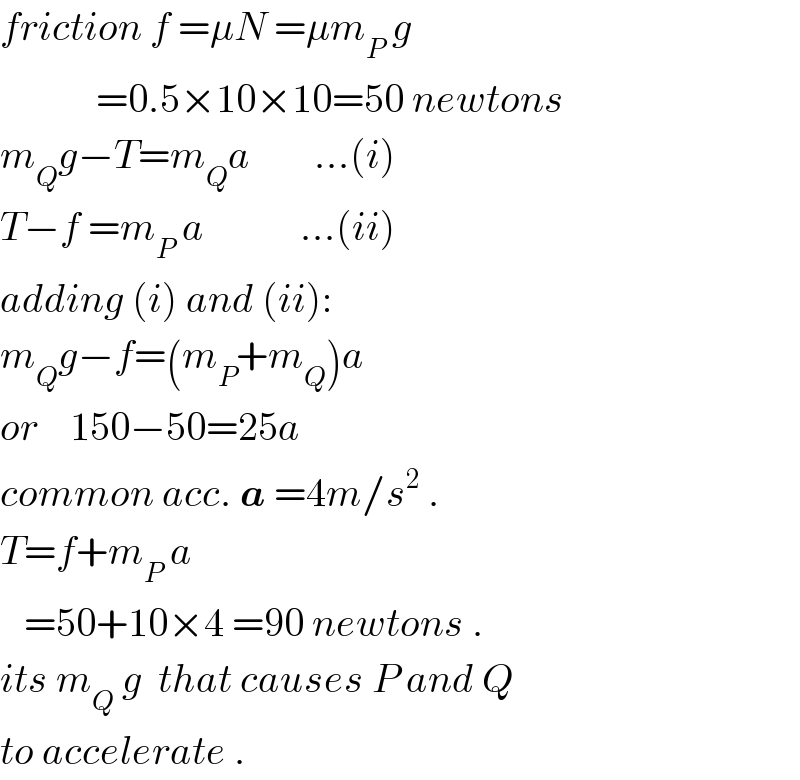Question Number 25943 by tawa tawa last updated on 16/Dec/17

Answered by ajfour last updated on 16/Dec/17

$${friction}\:{f}\:=\mu{N}\:=\mu{m}_{{P}} \:{g} \\ $$$$\:\:\:\:\:\:\:\:\:\:\:\:=\mathrm{0}.\mathrm{5}×\mathrm{10}×\mathrm{10}=\mathrm{50}\:{newtons} \\ $$$${m}_{{Q}} {g}−{T}={m}_{{Q}} {a}\:\:\:\:\:\:\:\:…\left({i}\right) \\ $$$${T}−{f}\:={m}_{{P}} \:{a}\:\:\:\:\:\:\:\:\:\:\:\:…\left({ii}\right) \\ $$$${adding}\:\left({i}\right)\:{and}\:\left({ii}\right): \\ $$$${m}_{{Q}} {g}−{f}=\left({m}_{{P}} +{m}_{{Q}} \right){a} \\ $$$${or}\:\:\:\:\mathrm{150}−\mathrm{50}=\mathrm{25}{a} \\ $$$${common}\:{acc}.\:\boldsymbol{{a}}\:=\mathrm{4}{m}/{s}^{\mathrm{2}} \:. \\ $$$${T}={f}+{m}_{{P}} \:{a} \\ $$$$\:\:\:=\mathrm{50}+\mathrm{10}×\mathrm{4}\:=\mathrm{90}\:{newtons}\:. \\ $$$${its}\:{m}_{{Q}} \:{g}\:\:{that}\:{causes}\:{P}\:{and}\:{Q} \\ $$$${to}\:{accelerate}\:. \\ $$
Commented by tawa tawa last updated on 16/Dec/17

$$\mathrm{Wow},\:\mathrm{God}\:\mathrm{bless}\:\mathrm{you}\:\mathrm{sir}. \\ $$
